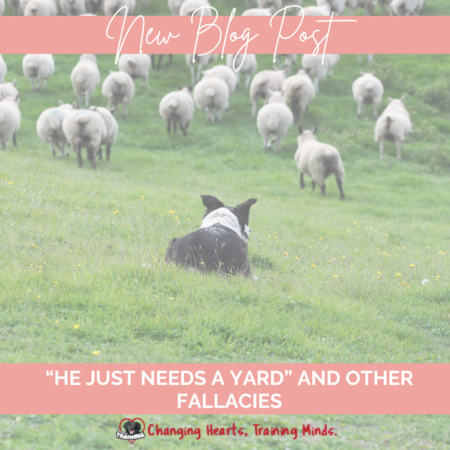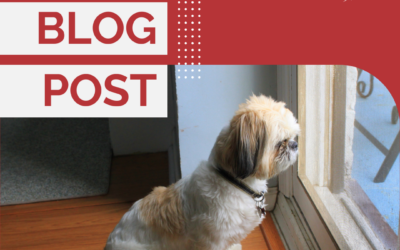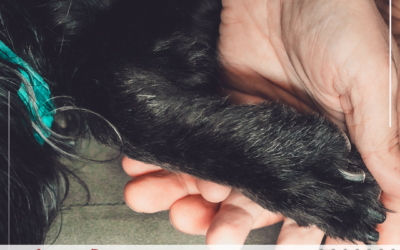As a trainer whose primary focus fear and aggression cases, I’m often contacted by clients after they’ve been through several other trainers and are at their wits end. A lot of times in my consult they have some fantasy idea about what their dog needs that they can’t provide – some magical cure for the dog that will somehow “fix” all of the dog’s problems and make them a happy, behaviorally sound dog. And, coming from the rescue and shelter world, I’ve heard it there too. We’d get dogs being returned and people would say things like “he just needs to be adopted by someone who has a yard” or “he needs to live upstate outside the city” or “he needs to live on a farm and he’ll be happy.”
Or sometimes, for really difficult cases, clients will ask about about sending dogs off to a “sanctuary” – some magical place they think exists that takes aggressive dogs with bite histories where they will live out a happy, natural life. I’ve written about the Dog Sanctuary Myth before and when asked my answer is always the same – “there is no such magical place – it’s a unicorn.” Dogs who would need to be sent away to a sanctuary are not safe in the general public or candidates to be rehomed. So this means the dog will be living in some form of isolation. And for social creatures like dogs, this is inhumane and that becomes a quality of life issue. The people are asking about sending the dogs away because they need to make tough choices and often are avoiding the behavioral euthanasia discussion.
But here’s the thing. Saying “he just needs a yard” or “he needs to live outside the city” or “he should live on a farm” – those are assumptions. You don’t know those things will solve whatever behavior problems the dog has. And there’s a greater likelihood that we can tackle what the dog is struggling with behaviorally rather than completely up-root it, try to rehome it and hope that solves the problem without causing new problems.
Let’s talk about some of these “quick fix solutions.”
He needs a yard: A yard is a convenience. It’s not a solution for the majority of behavior problems. For some fearful dogs, who may be afraid to walk outside initially, yes, it may be a safer place to potty. But, so is inside. A yard is a convenient place to let your dog out to potty when the weather is bad so you don’t have to walk them. It’s a convenient place to throw a ball around or have a playdate. But most dogs do not just go into a yard and entertain themselves and tire themselves out. A yard that is familiar to your dog is pretty boring and uninteresting and becomes their toilet, not a place they’re super excited to go play in all alone. Sure, they’ll play in it if you’re out there playing or running around with them, but merely having a yard isn’t going to be a solution for exercise or enrichment for a high energy dog without effort on the human’s part.
He needs to be outside the city: Sure, cities can be loud and full of people and challenges. And some dogs struggle with that, at least initially. For dogs that came from rural places and lacked proper socialization this can be a particular struggle, but with proper training, and sometimes medication, most dogs can successfully learn how to live and often, thrive in urban environments. My course, Conquering The Urban Jungle is aimed specifically for these types of dogs.
He should live on a farm: This is a common one for people who have dogs and struggle with their normal breed behaviors, like herding or hunting behaviors. There’s been a trend recently to get dogs based on looks or size and and not really focus on what these dogs have been traditionally bred to do. People are surprised when they get cattle dogs, or other herding dogs and they do herding behaviors. Or when their cute little terrier or part hunting dog chases critters. Or when their traditionally bred guard dog isn’t comfortable with strangers. Or their dog has noise sensitivities and is upset every time their kids run around and scream and play. And when they realize maybe this particular breed wasn’t the best fit for their family with small children with lots of visitors, they think a farm could be a solution. But, guess what? Working farms are not idyllic peaceful places. They’re loud. They’ve got lots of farm equipment like tractors and other farm equipment. Or they have farm workers (aka strangers, likely wearing hats and other “gear” that may make them look unusual). And these workers may be different every day, coming and going. So dogs, like guard dogs, herding dogs and other breeds who have been bred to notice and detect to changes in their environment, who may be uncomfortable with those constant changes or at the very least, alerting to them, are not going to be comfortable in this environment. Working dogs, true workings dogs, are purpose bred for that job. Livestock guarding dogs, purpose bred cattle dogs, working border collies – they are all bred and raised from a very early age around livestock and cattle to be safe and emotionally stable around these animals, and around the workers who handle the animals and who are on the farm. Working dogs have incredible impulse control and are confident, non-fearful dogs. You cannot just put any dog onto a working farm and expect they will adjust or thrive, let alone not be a danger to themselves animals or workers.
These aren’t solutions. These seem like quick fixes when we should be looking at the underlying issues the dog has. Are we meeting the dog’s needs? I would venture to say, probably not. What do I mean by that? Meeting your dog’s needs isn’t just about basic needs like food, water and shelter, but is about ensuring you are providing care in all ways that foster a life and environment that promote safety and well-being while providing opportunities for growth, predictable interactions and that there’s a focus that both physical and mental wellness are a priority by using force-free training and handling methods, cooperative care for grooming and vet care and by providing agency and consent in day to day interactions as well as ample opportunities for species and breed specific behaviors. You can read more about what I mean by this in my Enrichment Is Not Optional post here.
Beyond enrichment, then we look at exercise, inter-species social interactions, training with a qualified behavior consultant like me and also working with a certified Veterinary Behaviorist. Most cases can be improved with medication and a proper training plan. Whatever you do, don’t use a trainer who promises to “fix” your dog using a shock or prong collar. I promise this will not only not make things better but it will very likely make things much worse.
You can schedule a session if you need help with your dog. If you are considering rehoming your dog, I have a special dedication session to help you navigate that decision making.
Happy training!
![]()




